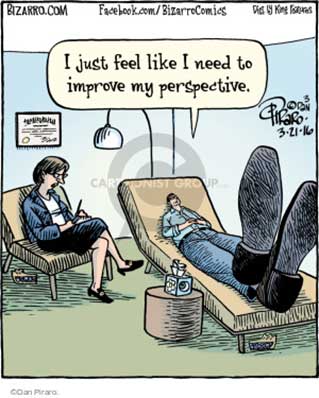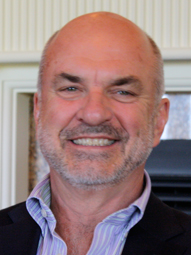 Working with senior executive teams, I rarely hear complaints about the technical and business talent level of the individual members in the room. However, asking about the effectiveness of the team as a collective leadership body, to lead the implementation of strategy and change…that is a different story. Most of these executives will report that the quality of the conversation in the boardroom is weak. The power that individuals demonstrate as individual contributors does not translate easily to collective contribution. Often the sum of the parts is less!
Working with senior executive teams, I rarely hear complaints about the technical and business talent level of the individual members in the room. However, asking about the effectiveness of the team as a collective leadership body, to lead the implementation of strategy and change…that is a different story. Most of these executives will report that the quality of the conversation in the boardroom is weak. The power that individuals demonstrate as individual contributors does not translate easily to collective contribution. Often the sum of the parts is less!
What could be more important than the quality of these conversations to generate effective choices and decisions for a successful and sustainable future? Yet, almost all will report that these conversations are mostly about the wrong things, safe, short term operational matters. Technical conversations about linear problems that have known pathways and solutions.
And even if these conversations are about the right things, longer term strategic conundrums and choices, then they lack candour, courage, vulnerability, openness and most of all a high quality of listening. Senior executives don’t know how to listen to each other, in order to learn from each other. Ongoing learning is critical for adapting the business to change, and without listening, learning does not occur.
If an observer from another more highly evolved planet were to witness these conversations they would conclude that the opposite of speaking is not listening, but waiting and preparing. The boardroom tends to be full of well-guarded technical monologues about the individual silo affairs of the enterprise. Very little dialogue about the enterprise as a whole.
There are two kinds of learning. One, I would describe more as technical learning, or the learning of new knowledge, skills, etc. From my own history and personal experience, I would put the study of organizational design, jazz music, Spanish wines and tennis in these categories. These have all been pre-occupations of mine over the last 20 years. I have accumulated knowledge and skills in these areas, but they haven’t required much personal change, other than allocating time to study and putting things in memory, either body or brain memory.
The other form of learning is adaptive. This is an intervention (conversation, presentation, workshop,) that requires me to reflect on my assumptions and habitual responses and behaviours, and consider making personal changes. This kind of learning is there to help me make better sense of my world, in order to adapt to it. In this learning domain, I have studied Adlerian parenting, approaches to coaching and consulting, training and workshops for how to be a more effective life partner in marriage. These aren’t just about new knowledge and skills, but require me to shift or change to apply those skills and knowledge. The gentleman (Terry Real) who my wife and I studied relationships with said, “This is less about the skills for being a better partner in your marriage, and more about how to work on that part of yourself that won’t utilize those skills.” So, to take this back to the boardroom, learning to delegate effectively, may have a technical component to it, but even after one learns those delegation skills, she is not likely to delegate, unless she learns what is intrinsically in the way that prevents her from feeling comfortable delegating tasks down the hierarchy.
In the boardroom we talk about and inform ourselves better about a particular emerging trend or market in our business, and how we should best respond to this in terms of resourcing and structuring this opportunity. This is technical learning. However, success in this new market, will likely require us changing ourselves and how we lead, spending more time on longer term development, and less on short term operational tasks. The adaptive part of this learning will be for some or all of the executive team to spend more time “on the balcony” and less time “in the weeds”. This will likely require letting go of some deeply embedded assumptions of who we are and what we do, and then thinking and behaving in new ways for us.
For years I worked with the CEO and the senior executive team of Canada’s largest grocery chain and second largest employer. They could have a very lively conversation during their precious time together, discussing the merits of lettuce being merchandized on flat or slanted tables. Back then it would be rare for them to be talking about how they should compete in a future world of WalMart Supercentres and e-commerce.
So back to this specific topic, on what listening is about, and how to get better at it, so that our learning and development can improve. Boardroom activity essentially has two parts. One is presentation, and the other is conversation about the presentation. The conversation has two parts, 1) speaking, and 2) listening. Speaking is pretty straight forward. We are all pretty good at that. 🙂 Listening is another story. Most of us need help here. Better listening requires personal reflection and change, and personal change is REALLY hard.
WHAT IS LISTENING? MAYBE, MORE ACCURATELY, WHAT IS ACTIVE LISTENING, AS OPPOSED TO PASSIVE LISTENING? ACTIVE LISTENING IMPLIES MORE THAN HEARING. IT REQUIRES BOTH HEARING WHAT IS BEING SAID, AND THEN INTERPRETING WHAT WE HEAR. SO A DEFINITION FOR LISTENING = HEARING + INTERPRETATION.
Based on this definition of listening = hearing + interpretation…..what we take in and accept, is NOT what is being said, but our interpretation of what is being said. This is key. If we can accept this as true, then the art of listening is to get better at interpreting the words we hear. So, how do we interpret what is being said. We know we all interpret what is being said differently. Part of this is accepting that our listening is prejudiced by our internal beliefs, assumptions and habits.
A staunch Creationist in the room will hear a very different message about social evolution than a trained scientist in the room will hear. Or more specifically, in the boardroom, when a suggestion is made to shift resources from one area to another area of our business, some will hear this as a great idea, others as a personal threat. Same words have been spoken, but different interpretations are made. In other words, when we listen we hear our internal story about what is being said (the threat? the opportunity?), not so much what is being actually said. We will always have those internal stories, those interpretations of what we hear. They are how we make sense of the world, make our decisions about things, etc. So, a key component of listening, is to “listen” to our OWN internal stories and look at whether they are truly valid or useful in today’s and tomorrow’s reality.
When we listen, we should both listen to the “other” as well as our internal story that we are telling ourselves, about what the “other” is saying. Our interpretation in regards to what is being said, is strongly influenced by our internal, learned, historical story about what is being said. We can’t help but be prejudiced. For me an “artful listener” is aware of this, and is able to both challenge the speaker and also listen to and challenge his/her internal story about what the speaker is saying. The listener is actively listening to BOTH the speaker and his story about what the speaker is conveying. This is a big part of what it is to self-aware, or willing and able to listen to our internal stories about what we are experiencing.
This ability is a requirement for individual executives in the context of their team work. Unless one is listening to both the words of the other, and his own internal response to those words, we don’t have effective listening.
In 2015 I was working with an executive team, where we ran a simulation on change. The team was divided into two, and they competed with each other on the best strategy to manage the strategic change. Afterwards, one of the executives came to be privately and said, “John had some great ideas, but we could not take them in, and incorporate them in our strategic change plan, because he can be such a pompous arrogant asshole, that we can’t hear him!”
 What are the sources of those internal stories? They come from some blend of our genetic makeup and predispositions, family of origin (how we were brought up) and social and cultural influences, we have been imbedded in for many years. These narratives are how we make meaning in life, how we decide what to do, what we pay attention to, and what we ignore.
What are the sources of those internal stories? They come from some blend of our genetic makeup and predispositions, family of origin (how we were brought up) and social and cultural influences, we have been imbedded in for many years. These narratives are how we make meaning in life, how we decide what to do, what we pay attention to, and what we ignore.
The art of listening, is being able to not let our stories run us (he is an asshole and not worthy of my attention), but be able to hear them, and decide to what degree we will let them influence us, in terms of paying attention to and taking in what the speaker has to say. In other words, are we going through life, blindly subject to our stories, our biases, our assumptions, our prejudices, where they run us like puppets on a string, or are we able to objectify our stories? Only when we can detach from and see our stories, hold them as object, can we decide whether they are still helpful and useful in our current situation. Do our stories need to be upgraded to help us make better meaning out of our situation?
Back to the purpose of the boardroom discussions. A portion of this purpose is to learn and develop in order to be a more informed and effective as a senior executive contributing to the success of her enterprise. Assuming this, then we need to be able to hear our own internal stories and what they are telling us. We need to decide whether they are valid and useful in helping us learn and develop, OR heavily biased and constraining a narrow point of view. We need to be constantly evolving our stories so that we have more choice in the world regarding how we change and adapt.
A recent personal example of how this played out for me. As some of you may already know, my personal inner story is grounded in a liberal attitude and slightly left of centre point of view. I had heard that David Frum (right wing, conservative journalist and ex-Republican president speech writer) wrote an excellent article on the Donald Trump phenomenon. My first reaction was, why would I read that idiot? And if I do decide to read it, I will look for all the misguided, ridiculous right wing opinions he has on the subject. In the end I was able to see this reaction for what it was, and how it prevented me from listening. I took a deep breath and read what he had to say in the Atlantic, and thought it was one of the most insightful pieces I had “listened to” on the topic. This listening experienced changed some of my views on the subject for the better.
So, can you imagine a Board Room leadership discussion, where individuals candidly and courageously share their point of view regarding what is best for the overall enterprise? Others truly put on hold their preconceived judgements, assumptions and beliefs, allow their existing personal perspectives to be recalibrated by the input from their colleagues, through active listening, as I have described it. Everybody is learning and developing because of the power of this conversation to influence change. The final round of comments on the topic is truly an evolved product of the earlier conversations, rather than just reflecting already established preconceived notions of the various individuals in the room.
© BRIAN BRITTAIN 2017. ALL RIGHTS RESERVED.


